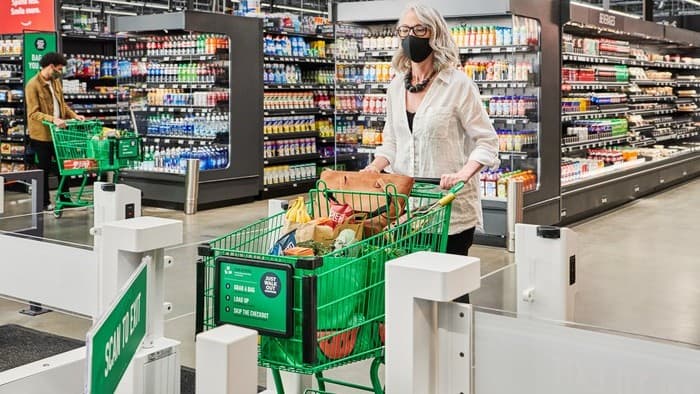This article was originally published on Fool.com. All figures quoted in US dollars unless otherwise stated.
Amazon (NASDAQ: AMZN) is closing its bookstores and other physical retail locations around the U.S., narrowing its focus to the grocery store segment. This move follows the reopening of Amazon's first Whole Foods location to incorporate its Just Walk Out technology, which allows shoppers to skip the checkout line.
Grocery has been an area of focus for Amazon for several years -- both physical locations and online. But as more grocery shopping moves online -- an area Amazon typically dominates -- it's found itself at a disadvantage compared to brick-and-mortar competitors like Walmart (NYSE: WMT). Shifting its physical retail focus toward grocery could help remove distractions and improve its competitiveness.
What's Amazon giving up?
Amazon currently operates 24 bookstores, 33 "Amazon 4-star" stores, and nine mall pop-up kiosks. It was planning to open 16 more 4-star locations, but plans for those stores have been axed and existing stores will be closed.
Those stores represent a tiny percentage of Amazon's physical store footprint. It has more than 500 Whole Foods locations and 25 Amazon Fresh stores. Those locations also have a much larger footprint than the other Amazon physical retail formats. Amazon also operates about two dozen small-format Go convenience stores. Those won't be closed.
Amazon's physical store segment generated $17 billion in revenue last year. That's less than 4% of Amazon's total sales for 2021. So the impact on Amazon's revenue from shuttering its retail stores will likely have just a small impact on physical retail sales, and it'll be mostly unnoticeable compared to the overall revenue of the company.
Going after Walmart's bread and butter -- literally
Walmart dominates the U.S. grocery market, holding an 18% share of the overall market and an even bigger share of the online grocery market. What's more, it's still beating the competition. On its earnings call last month, management said it grew its grocery market share in the fourth quarter.
Amazon's website and Whole Foods locations account for just 2.4% of grocery sales in the U.S. Amazon does much better online. It grew to become a leader in online grocery sales in 2017, but it failed to keep up with the growth of the competition.
Walmart took a significant share of the growth in online grocery sales in 2020, and it's created a significant gap between itself and Amazon. Amazon has been able to grow in line with the overall market, maintaining its overall market share, but Walmart has produced excellent results in the space.
The key to Walmart's success online has been the rapid rollout of curbside pickup and delivery. It offers pickup at 4,600 stores and delivery from 3,500 as of the end of January. Customers responded well to Walmart, which saw some customers shift from shopping for groceries in its stores.
Amazon cannot compete with that level of convenience in every market. Curbside pickup is the preferred method of online grocery ordering for 75% of shoppers, according to a survey from Mercatus. It's no wonder Walmart continues to take share with its massive store footprint.
Focusing on expanding its physical grocery footprint should allow Amazon to build stores with the omnichannel experience in mind. Stores will be able to fulfill online orders from day one, unlike Walmart, which had to put new processes in place and renovate stores in order to adapt. Moreover, Amazon can provide a better in-store grocery shopping experience by integrating its technology as well as customer perks into the shopping experience. After all, most grocery shopping still happens in stores, and that's not going to change for a very long time.
Amazon's biggest advantage is that grocery remains one of the few categories where its market share is relatively small. While Walmart is working to defend its position as the leading grocery retailer, Amazon has a lot of room to take market share and grow quickly. Removing other distractions in its physical retail strategy will help it make the most of the opportunity. And considering U.S. grocery sales totaled $750 billion in 2020, it's a pretty big opportunity.
This article was originally published on Fool.com. All figures quoted in US dollars unless otherwise stated.









